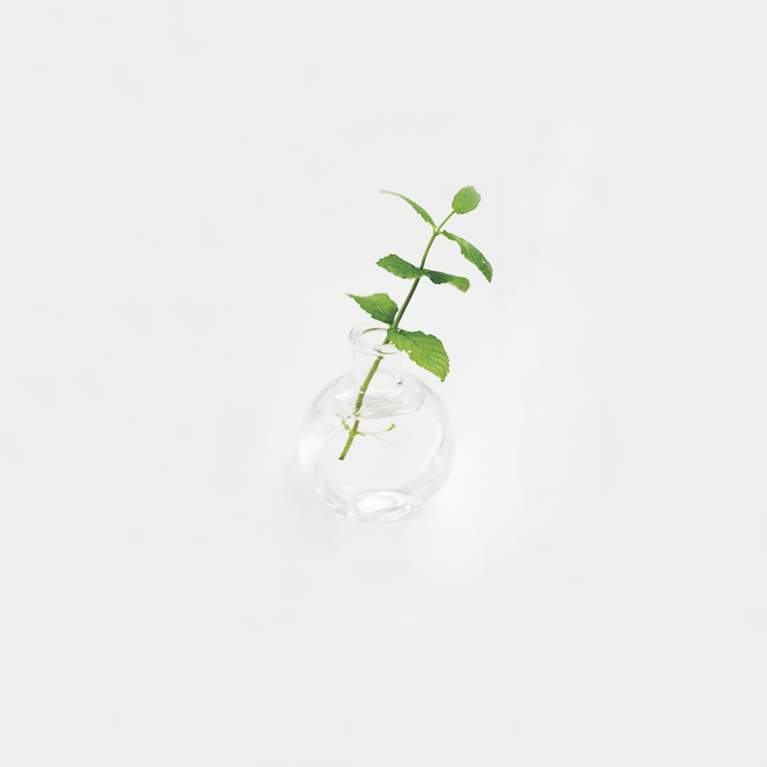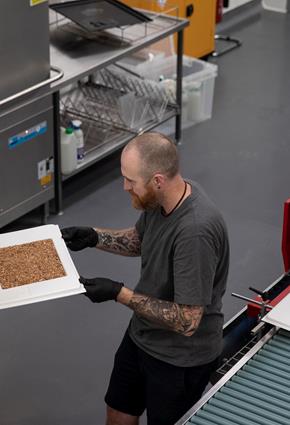A garnish in a cocktail adds a touch of theatre and fun to a drink. It also enhances the drinking experience by awakening other senses such as sight and smell before taste comes into play. But, buying a packet of herbs from the supermarket just to add a sprig or two to a drink is quite wasteful, especially if the remainder of the packet is left to wither in the back of the fridge. So why not grow your own?
Herbs are one of the easiest plants to grow and you don’t need a lot of space. A balcony, container garden or even a sunny windowsill are perfect places to grow herbs for cocktail garnishes. Herbs look and smell great too and a little extra greenery in the house is no bad thing.
This is a list of our favourite herbs to use as a cocktail garnish. To help explain how to grow them, we’ve included advice and growing tips to help you plant, water and protect your herbs all year round, plus a few of our favourite varieties to help you choose which herbs to grow in your garden.
I. Thyme [Thymus]
Thyme has been used for centuries around the world in cooking, as a medicinal remedy and for incense. Mainly originating from the Mediterranean region, Thyme can cope with more arid conditions making it a very suitable plant for growing in containers where watering is often neglected. Thyme is great for pollinators and there are many, many types to choose from. We’ve included a few of our favourites below. Sun and good drainage are the pillars of success when it comes to growing Thyme at home because it hates cold, damp conditions.
Plant in a sunny spot in a container or window box filled with 3-parts soil-based compost such as John Innes no.2 and one-part grit.
Water two or three times a week in Summer. In very hot and dry weather, increase to three or four times a week, especially if your Thyme is positioned on a warm window sill.
Look out for Thyme is relatively pest free but is susceptible to root rot if grown in damp soil.
II. Basil [Ocimum basilicum]
Basil ranges from mild and sweet to strong and aromatic in flavour. Sweet Basil is a supermarket favourite because its green oval leaves are so versatile when cooking. But Basil can be purple and have variegated leaves too. A half hardy annual, you will need to grow a new set of Basil each year. If you want to grow basil from seed, sow in March to April, otherwise buy plug plants in June.
Plant up a plug plant in a 9cm pot filled with a soil-based compost. Position in a sheltered spot out of the direct midday sun. You may need to re-pot again as it grows fairly quickly.
Water early in the morning or in the evening and avoid splashing the leaves to prevent scorching or the build-up of powdery mould. Basil likes to be watered little and often. You may need to water every day in hot weather. Look out for wilting leaves and stems as a sign your plant may need watering more.
Look out for pests such as whitefly and red spider mite. If planted outside, protect plants from slugs and snails.

III. Pea shoots [Pisum sativum]
Ok, so not a herb but an amazing plant to grow for a cocktail garnish. The flavour of home-grown Peas is a world away from the taste of Peas bought in the supermarket. A really easy way to achieve the fresh sweetness that home-grown Peas can offer, without having to grow a full plant, is to grow Pea Shoots. Just as edible as the pods, Pea shoots are tender and look great trailing down the side of a cocktail glass.
Pea shoots can be grown from seed indoors all-year-round and outside from late Spring to early Autumn.
Plant by filling a one litre pot with a soil-based compost such as John Innes no.2. Push seeds 1cm into the soil, leaving 1cm between each seed. Water thoroughly after planting.
Water fairly regularly if your growing Pea Shoots indoors.
Be careful of over harvesting. Don’t cut back your shoots too far on the first cut and allow a little time for them to grow back before harvesting again. Sow in succession [sow a new set every few weeks or so] for shoots all-year-round.
IV. Mint [Mentha]
A classic cocktail garnish and an old-time favourite. If you want to know how to grow Mint at home, the first big tip is to always plant it in a container, never in the ground, because it grows and spreads very quickly. This is another low-maintenance hardy herb to grow and a great option for a small garden. It can be left outside all year and is frost-hardy. It’s also a good choice if your garden or window sill doesn’t benefit from a lot of light, as Mint can cope with shady conditions.
Plant a 9cm plug plant in a one litre pot filled with a mix of three parts soil-based compost and one-part horticultural grit. Firm down and water well after planting. You may need to pot up again during the same season, look for roots poking through the bottom of the pot as a sign that it might need more room.
Water Two or three times a week. Mint can take a bit of neglect but if you start to see the soil come away from the side of the container you probably need to water your Mint a bit more regularly.
Look out for white spots on the leaves. This is quite common and it shouldn’t stop you from using the Mint as a garnish in drinks.
V. Lemon Verbena [Aloysia citrodora]
A lovely fragrant herb that will add a citrus scent when added as a garnish to a cocktail. Its attractive, elongated leaves are lime green in colour and when planted in the ground it can grow to a quite sizeable bush. It is half hardy, so pots will need to be brought under cover during the Winter until the risk of frost has passed. If you decide to grow Lemon Verbena in the ground, protect the plant from frost with horticultural fleece. This is also a great herb to grow if you enjoy making your own herbal tea.
Plant Buy a healthy-looking young plant from a nursery with white healthy roots poking out the holes in the bottom of the pot. Plant up into a pot no more than one size larger than the original as Verbena likes to feel a little restrained. Ensure the plant has good drainage by using a mix of soil-based compost and horticultural grit.
Water Lemon Verbena likes to be left a little thirsty so water once or twice a week.
Be aware of the deciduous nature of Lemon Verbena. In Winter, especially if grown outside, Lemon Verbena will lose its leaves. Do not panic! They will return with new growth in the Spring.

OUR FAVOURITES
BASIL
Cinnamon Basil, Ocimum basilicum ‘Cinnamon’. The oriental flavour makes it an ideal pairing for stir fry dishes. The leaves are highly fragrant and contrast attractively with its dark-purple stems.
Sweet Basil, Ocimum basilicum because of its versatility. If you do buy a plant from a supermarket, water it well when you get home and then pot it up into fresh multi-purpose compost.
PEA
‘Tall Sugar Snap’ produces a good crop of vigorous shoots that keep coming back again and again.
‘Alderman’ is another great “cut and come again” type of Pea. No-dig expert Charles Dowding suggests pinching out shoots rather than cutting.
‘Serge’. This miniature variety of Pea is sweet in flavour and a good option if you want to grow Peas in containers or to grow Peas for shoots.
THYME
Lemon Thyme or Thymus ‘Culinary Lemon’ for its fragrant foliage and pretty purple flowers.
Common Garden Thyme, Thymus vulgaris is a good every-day Thyme.
Hartington Silver Thyme, Thymus ‘Hartington Silver’. Its oval leaves are variegated in shades of pale green, white and silver.
MINT
Moroccan Mint, Mentha spicata var. crispa ‘Moroccan’ is a good all-round Mint. Make fresh Mint tea by gently crushing a few leaves in the bottom of a mug and top with hot water.
Spearmint, Mentha spicata is a distillate in Seedlip Garden 108. If you’re making cocktails using Garden 108 at home, a pot of home-grown Spearmint will be a perfect match.
Pineapple Mint, Mentha suaveolens ‘Pineapple’ has variegated green and white leaves. A very attractive option for drinks. When rubbed between the fingers, a subtle Pineapple scent is released.




